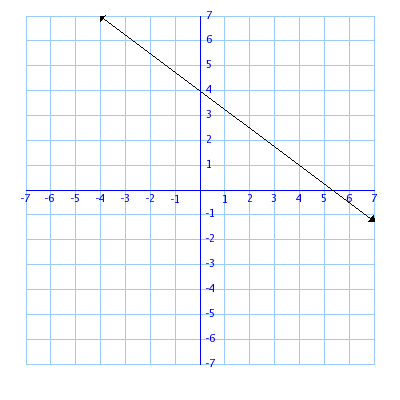In this topic, you will find the equation of a line based on its graph.
One way to write an equation for a straight line is the slope-intercept form:
Write the equation in y=mx+b format.

Step 1: Find the slope, m.
Let's pick the two points (0, 4) and (4, 1) on the line to find the slope.
Step 2: Find the y-intercept, b.
The line crosses the y-axis at point (0, 4) so the y-intercept is 4.
Step 3: Put m and b in the equation.
| y = |
mx |
+ |
b |
| y = |
-3
4 |
x |
+ 4 |
The answer is .